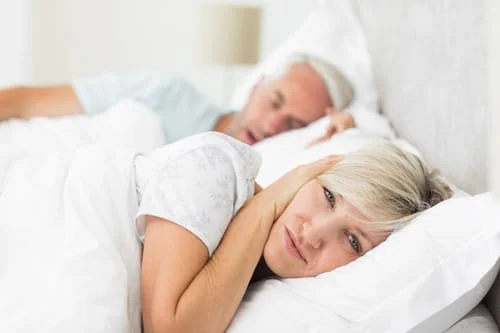Diagnosing Sleep Apnea

Diagnosing sleep apnea can be incredibly difficult, which is why seeing your local San Antonio ENT Doctor is key to identifying and treating this condition. It is possible to snore without having sleep apnea. It is also possible to have snoring alone on some nights but snoring and apnea on another night depending on how tired you are, how congested your nose is, whether you had alcohol or a sedative before going to sleep, etc.
The most difficult part about treating sleep apnea is convincing the patient that they have a problem. This is because the onset of sleep apnea is very gradual and generally occurs over several years. A full range of evaluation and treatment options for both snoring and sleep apnea are available. If you even remotely believe that you have sleep apnea, I strongly encourage you to be evaluated. Remember being evaluated doesn’t mean you have to have a CPAP or surgery; it is just that being evaluated. We can only fix what we know about. Come in today to be evaluated at Everyone’s ENT & Sinus Center.
The treatment has improved over the last several years with introduction of minimally invasive procedure for the control of mild to moderate sleep apnea. Sleep apnea occurs from multiple levels of the upper airway. Though most people think of the palate and tonsils as the main cause of sleep apnea, negative pressure anywhere in the airway will cause a collapse in the airway followed by obstruction. The four main areas of concern for sleep apnea is the nose, soft palate and tonsillar area, the base of the tongue, and around your voice box. Additionally, extra weight on your chest can cause an obstructive pattern of breathing while you sleep.
Receiving Medical Treatment
One treatment for sleep apnea is CPAP (continuous positive airway pressure). This involves using a mask that fits over the nose and sometimes nose and mouth that is connected to a small machine that puts positive pressure through the nose and throat while the patient is asleep and keeps the airway open. It is highly effective at controlling apnea and has been a lifesaver for many patients. This is the only modality available that addresses all anatomical areas of obstructive sleep apnea. However, it is not the only treatment. Don’t delay getting evaluated because you don’t want to wear a CPAP.
The area of the nose can be treated medically with nasal sprays and nasal saline flushes or surgically with septoplasty. Many people don’t breathe well through their nose at night from allergies, sinus, and/or deviated septum. This nasal obstruction can contribute to your snoring. Dr. Gilliam can evaluate all these areas.
The area of the palate and tonsils can be treated with UPPP (uvulopalatopharyngoplasty); however, many patients are unhappy with this procedure due to the decrease level of success but high level of complications and post-operative pain associated with the procedure. Over the last several years, the pillar procedure has been introduced and is a very nice option for several patients. This procedure places pillar at the junction of hard and soft palate to reduce movement of the palate while sleeping. Patients are still able to eat and talk as they have before the surgery. The patient does not feel the pillars. Another nice benefit of the procedure is it can be done in the clinic with minimal to no down time.
The area of the base of tongue can be treated with oral appliances. These oral appliances are fitted to connect the lower jaw to the upper jaw. It moves the tongue forward, so that when a person is sleeping the tongue does not cause obstruction.
Weight loss is always beneficial. It does not have to be a large drop, for some patients 10-20lbs can make a significant change in their snoring & obstructions.
Surgical Treatment
As discussed above there are now several minimally invasive options for sleep apnea. However occasionally, surgery is required. This may involve assuring that the nasal airway is patent via septoplasty and inferior turbinate surgery, sinus surgery to reduce nasal inflammation, or tonsillectomy to remove enlarged tonsils. It is important to look at all possible causes of your snoring, sleep apnea, and/or fatigue.
Contact Dr. Gilliam Today
We encourage you to reach out to us either by giving us a call at 1-210-647-3838 or booking online . Dr. Gilliam was educated right here in Texas at Texas Tech University in Lubbock and then medical school at University of Texas Medical School at San Antonio. She is both an experienced and passionate ENT doctor who is always looking for ways to improve the quality of life for her patients. We look forward to seeing you at the office!

